Yesterday we met Tom and Adam out on the sea ice in front of the station with the giant Reedrill rig pulled by the humungous Challenger Caterpillar.
The Reedrill can drill four-foot diameter dive holes in the sea ice.
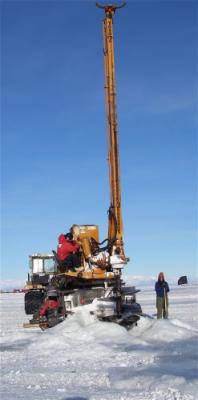
Tom uses the Reedrill to drill a 4-foot diameter hole in the sea ice
Adam, Stacy and I used shovels to clear paths in the accumulating pile of snow and ice from the drill so the seawater had channels to pour out of when Tom reached water.
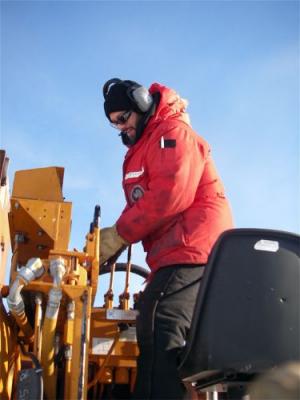
Tom Holford is a master of the drill controls
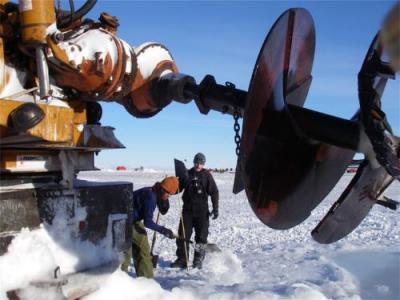
Look at the size of that drill bit as Stacy and Adam shovel snow in the background!
After the hole was drilled, the Reedrill was de-rigged and the Caterpillar blade pulled the snow and ice pile away from the dive hole so the surface was flat enough to pull a dive hut over.
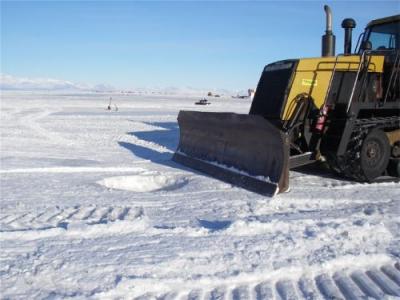
The Challenger Caterpillar backscrapes snow away from the new dive hole
Then Stacy and I used large fish nets to remove chunks of floating sea ice from the new holes.
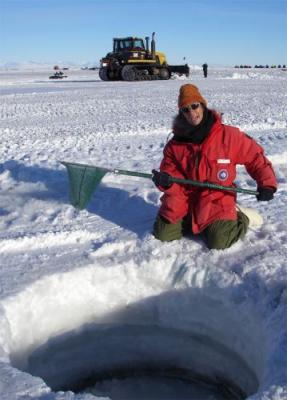
Stacy scooping sea ice chunks from the new dive hole
Tom and Adam now used the Challenger to bring us a new dive hut. The huts are on plastic sled runners so they can be pulled across the sea ice.
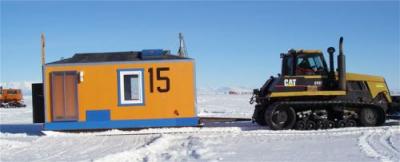
The caterpillar brings us our new dive hut!
The dive hut has to be located very precisely over the dive hole. There is an opening in the floor of the hut so the divers can access the dive hole from the hut. Imagine driving the caterpillar and trying to line up the hut over the hole without being able to see what you are doing! Stacy got pulled in the hut so she could see when it lined up. They used arm signals and radios to communicate directions.
Once the hut was in place, the propane guys came out to hook up the heater in the hut with a propane tank. Propane (pay attention chemistry students!) has a boiling point of -44 F so it is a compressed liquid in the tanks and then comes out as a gas that runs the heater in the hut. They used to use a propane-butane mix but that didn't work as well (look up the boiling point of butane and you will know why). All the leftover propane-butane mix is now used for outdoor barbecueing when the weather warms up down here around Christmas.
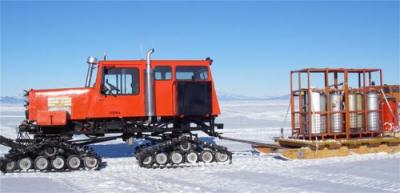
A tucker hauls a sled of propane tanks for the heater in the hut
The huts have solar panels for electricity. We also added a large battery to our hut to drive a fan that sends warm air from the hut over the dive hole to keep the surface from refreezing. It is nice not to have to chip ice out of a dive hole before you dive in it!
After we got the first dive hut fixed up, we hauled two more portable units called "Tomatoes" over the other two dive holes that Tom and Adam drilled for us. The Tomatoes are pretty cute.
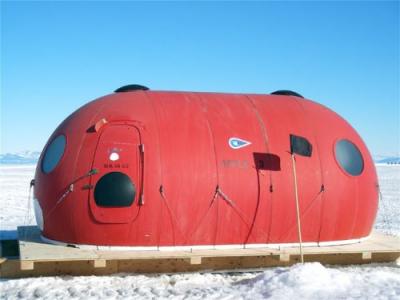
This portable unit is affectionately called a Tomato!
Today, we'll be taking our first dive out a tomato - so stay tuned for more adventures from the ice!

